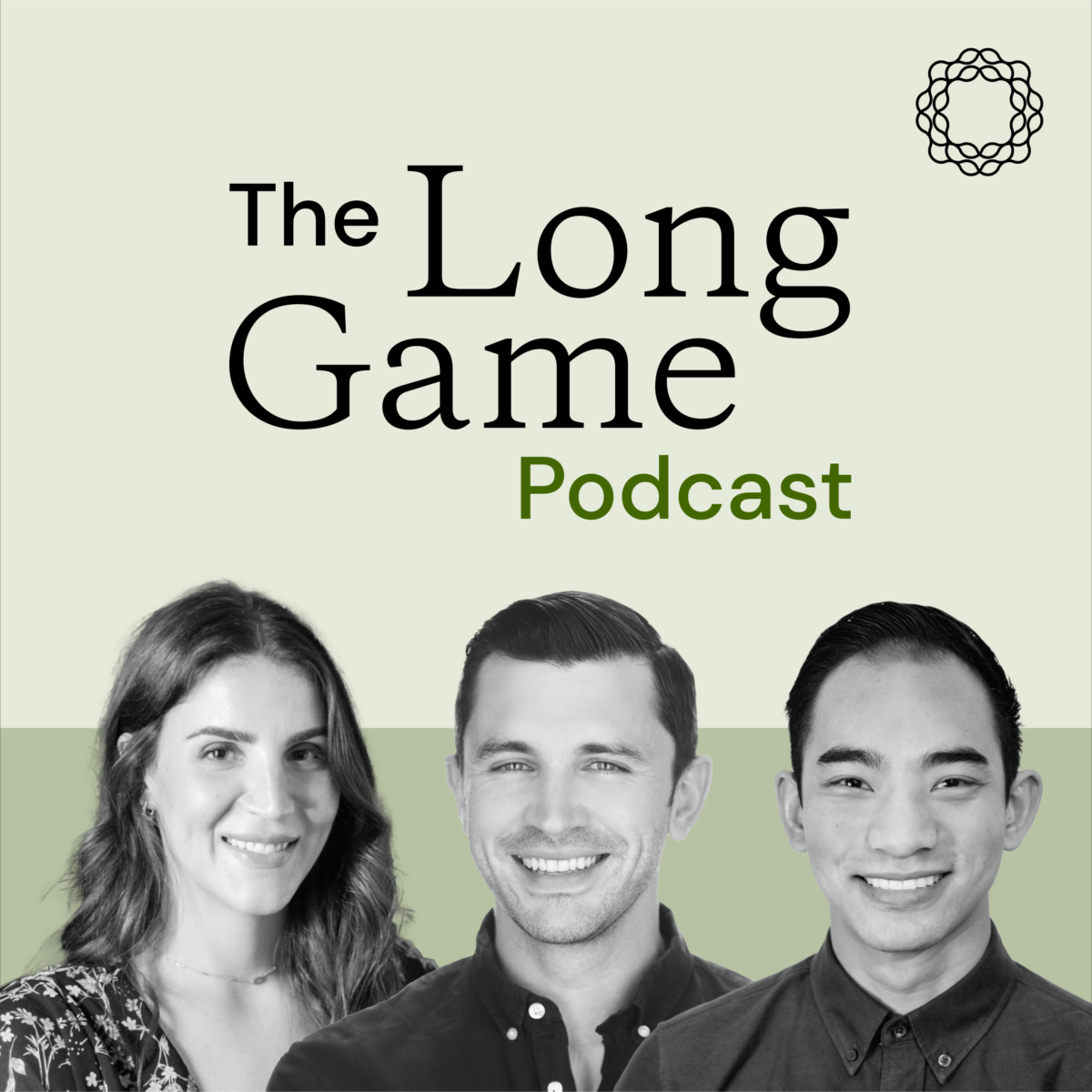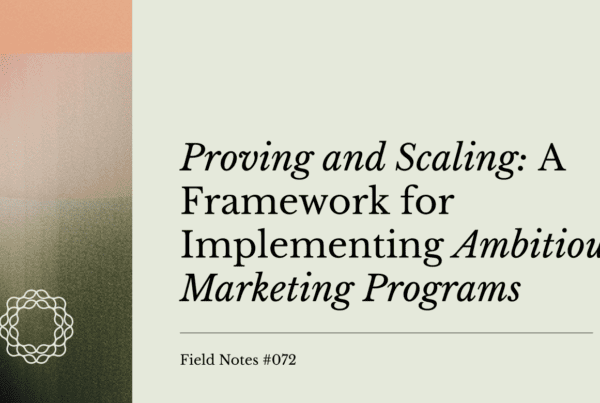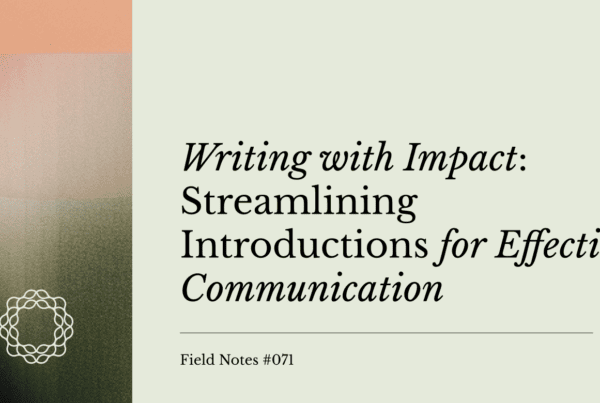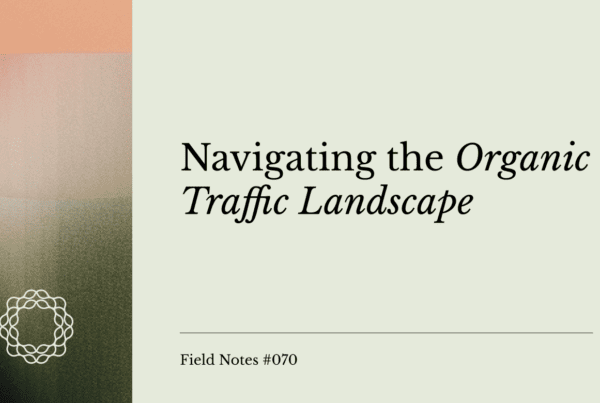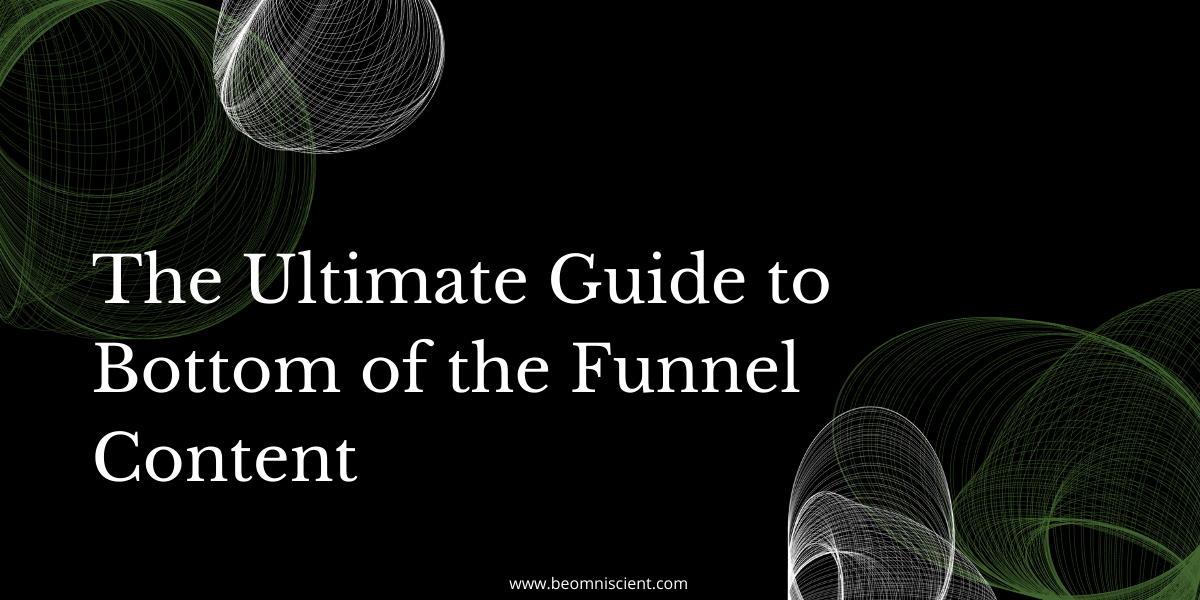
Bottom of the funnel content is massively underrated and many times misunderstood.
I’m a direct-response, performance marketing, revenue guy. Therefore, bottom funnel is my bread and butter.
I’ll teach you in this post how I approach decision stage content, how it differs from top of funnel content, how to map content to the buyer’s journey, and what the hell you should do with middle of the funnel content.
But first…
What the f*ck is a funnel?
The funnel, by and large, is made up. It’s a model. And all models are wrong, but some are useful. And this one can be pretty useful.
Typically, in content, there is the top of the funnel (TOFU), middle of the funnel (MOFU), and bottom of the funnel BOFU content.
TOFU content represents introductory content. It captures attention and builds awareness.
MOFU content represents consideration and evaluation stage content. It’s where a prospect becomes interested.
BOFU content represents the decision stage of a buyer’s journey. It’s typically the last touchpoint before a prospect signups or buys.
The above graphic, while helpful, is not completely accurate. For example, it places “emails” in evaluation, but “emails” is literally just a channel. You can have TOFU email content (think an industry news roundup), MOFU email content (technical tutorials for your industry) and BOFU email content (sales emails).
The format of the content may lend itself towards one stage or another, but it doesn’t define the buyer’s journey stage.
Case in point: blog posts can and should sell. Every affiliate marketer knows this. Yet on this graphic, and many others, blog posts are relegated to the top of the funnel.
Which is why you’re missing out on revenue, your content marketing budget never increases, and the program you’re building is constantly undervalued.
It’s time to treat content as a multi-use tool that can be used to persuade, entertain, educate, and yes, sell.
Okay, so what is bottom of the funnel content?
While I’m still not convinced the “funnel” model is perfect, bottom of the funnel content can be distinguished based on its stated intent or goal.
The goal of bottom funnel content is to sell things.
Top of funnel content can have several goals – backlinks, general traffic, email signups.
Same with middle funnel – typically, this will be offer signups or email list signups.
But with bottom funnel, you want last click attribution conversions or sales enablement content that closes deals.
So no matter what format the content is, or where you distribute it (search, social, email), the goal is what makes it stand out.
8 Types of Bottom of the Funnel Content
I’ve written in the past about “product led content.” While product led content can also appear at the top and middle of the funnel, bottom funnel content almost certainly *has to be* product led.
Certain formats of content are more conducive to bottom funnel, though. I’ll walk through 8 of my favorites with examples:
- Product listicles
- Product comparisons
- Case studies
- Product use case content
- Webinars
- Courses
- Ebooks/Whitepapers
- Videos
- Documentation
1. Product listicles
Confession time: I used to hate listicles.
“The list of n things is in that respect the cheeseburger of essay forms. If you’re eating at a restaurant you suspect is bad, your best bet is to order the cheeseburger. Even a bad cook can make a decent cheeseburger. And there are pretty strict conventions about what a cheeseburger should look like. You can assume the cook isn’t going to try something weird and artistic. The list of n things similarly limits the damage that can be done by a bad writer. You know it’s going to be about whatever the title says, and the format prevents the writer from indulging in any flights of fancy.”
This, however, is the viewpoint of an artist.
And while I love and revere art, content marketing should make money.
So when I worked at HubSpot, I instigated quite a bit of listicle writing. Product listicles like:
And guess what? They made money.
Now I write the same stuff on my own personal blog (though much higher quality, I think you’ll agree). And the verdict? They make money!
Why?
Because from a search intent perspective, someone that searches “live chat software” or “best content marketing courses” or “mailchimp alternatives” is looking for a product. They want to buy and are comparison shopping. They’re basically coming to your site, wallet in hand.
These keywords can be highly competitive, however. So typically, you won’t be able to rank without a lot of link building. This is why we use the “barbell strategy” – to build a portfolio of product led content balanced with linkbait content to make sure you can actually rank for this stuff.
You can, however, with some creativity, find some lesser known product keywords and rank easily. They’re typically “hidden,” though, because keyword research tools don’t often show that they have any volume at all.
How do you find these, then? Customer research and keywords everywhere.
2. Product comparisons
Related to product listicles is the product comparison.
This may even be further down the funnel. Product listicles are when someone is shopping for options. Product comparisons are when they’ve come down to a few options and need details.
Think pieces like “Marketo vs HubSpot” or “Magic Spoon vs Catalina Crunch”
Many companies don’t want to write these because they don’t want to bring salience to their competitors. Hmmm – too late. Your prospects are already looking at them. You might as well have some sway over the conversation.
Additionally, keyword research tools tend to underestimate how much traffic these types of queries get, and even if they don’t get a lot of traffic, the conversion rate tends to be quite high.
Even if you’re not using these for SEO, the sales enablement benefits can be tremendous. I’ve also seen great effect at using them as PPC landing pages.
One common problem with these is to oversell. I mean, you’ve definitely seen pages with this chart:
So when doing these, make sure to maintain some semblance of reality if not objectivity. Emphasize your strengths, but acknowledge that you’re not for everybody.
3. Case studies
Case studies and customer stories are commonly done, but again, underutilized.
We’ve got a bunch of ‘em on our website. We’re collecting more. It’s been a huge success for us, even at a small scale.
People read them and find them on our website. We send them to prospects during sales conversations and use them in our decks.
We even repurpose them to share on social media:
Problem is, many case studies suck and are boring to read and therefore ineffective.
I’m not the case study expert, but here’s what my teammate Karissa says about effective case studies:
“Many B2B services and products are complex and expensive. Real examples from satisfied customers can better convey pain-points and challenges, reveal solutions your company provided, and demonstrate amazing results.
Case studies don’t have to be boring. Tell a story. If you infuse tension, suspense, and progress, (or conflict, climax, and resolution), you can take readers on a journey, which will evoke emotion, and at best– action. The best stories relate to your customer’s challenges, and keep their interest and curiosity. People connect with people, not companies, and stories humanize business.”
Especially if you’re selling high ticket B2B deals, case studies are powerful. In B2C, these tend to be shorter testimonials (best if in video form). You can use testimonials in B2B content of course, and you can also do long form case studies for B2C.
Whatever the case, potential clients and customers are looking for the answer to the question, “can they solve my problem?” And they tend to look for proof that you’ve solved their problem for someone like them.
Case studies are a great social proof mechanism to express this and build trust.
4. Product use case content
I believe most content can weave in your product. Even top of funnel stuff.
But specifically at the bottom of the funnel, you can write product specific content.
One of the best examples I know is Ahrefs (the master of product led content).
When you search “Ahrefs features,” this is the first article that pops up:
Beautiful.
Also watch this interview I did with Tim Soulo where he talks about their approach to product led content.
Product updates can work, but those are typically more product marketing content and more useful for current customers. Though, when done correctly, they can definitely nudge someone towards purchase.
My favorite way to do product use cases is to teach something product-agnostic, like how to create a web form. And then, through teaching how to do that thing, you just illustrate using your product. Value additive regardless, and you might as well use your own product to walk through how to do it:
5. Webinars
Webinars, though almost always boring as fuck, are a demand gen marketer’s trusty sidekick.
Even the worst executed webinars tend to have a few assists when it comes to deals.
It takes a lot of interest for someone to sign up for a 30-90 minute presentation. It means they’re truly invested in solving whatever problem you’re proposing to solve.
If you can pull off your webinar and convince the audience you know what you’re talking about, you’re in good shape to sell them your service or product.
There’s a reason every info marketer in the world has a webinar as part of their automated sales funnel. It works. It sells.
We run Office Hours, which takes a lot of time and effort to curate. We pick three experts and have them give 20 minute hands-on talks. Audience grows every time, we learn valuable stuff, and it allows us to send follow up emails for our course.
6. Courses
Similar to a webinar, if someone signs up for a course (free, but especially paid), they’re probably quite serious about the problem they’re hoping to solve.
A free email course is actually my favorite lead magnet. We use one for our blog. It’s a content strategy mini course.
I’ve done this at several companies. CXL has tons of free courses.
At a larger level, many companies have invested in building academies. Think Optimizely’s Optiverse, HubSpot’s Academy, or Workato’s Automation Institute.
Courses are amazing because you’re teaching genuinely valuable skills and training up someone on your own product. If they’re not already a customer at the time of taking the course, they’re likely to be eventually.
It’s a lot of work to create these, but the payoff can be huge. It can create not only customers, but evangelists.
7. Ebooks/Whitepapers
Ebooks, whitepapers, and reports tend to be gated assets, and gated assets in general are used as bottom of the funnel content.
Someone enters your website or blog, looks for information, and you create an offer that is a bit more in-depth than what you would offer for free on your site. They sign up, enter their email, and get your ebook, whitepaper, or report.
This alone represents an increased level of interest compared to the average website visitor (you won’t convert ‘em all).
Generally, you can use these materials to both educate and sell, and then you have the visitor’s information, so you can follow up with email automation.
We, for example, have a ton of gated offers, templates, and ebooks:
On my personal site, I offer an ebook in a popup. Brings people to my email list.
Most mature content programs have something like this, particularly in B2B SaaS.
HubSpot, for example, has some sort of guide or report attached to pretty much every blog post they publish:
These are a great way to bridge the gap between middle funnel content and bottom funnel content, as not everyone who lands on every blog post will be ready to request a demo or look at a case study.
8. Videos
Now, obviously a video doesn’t *have* to be bottom funnel content. In fact, most of them are purely entertaining. Even in B2B.
One of my favorite channels, Ahrefs, is adept at blending education, entertainment, and produce tutorials:
The most iconic example of bottom funnel content through video is either a) the company introduction video or b) the product tutorial.
You can produce these yourself, or you can work with affiliates and partners to create content for you.
There are also tons of views for product review videos. Again, you may have to work with partners and affiliates on stuff like this:
You can also pre-record webinars and demos and offer them on-demand. Wunderkind does this with their webinars:
9. Documentation
Most people don’t think of product documentation as content marketing, but in my opinion, it is.
Unless your product is astonishingly easy to use, it’s likely the decision making process will entail some technical reviews from your prospective clients. It might not be the CMO doing this, but the end user will almost certainly be compiling a checklist of functionalities and limitations during the review process.
Part of this can be facilitated by case studies and product comparisons, as well as use case content. But documentation goes one layer deeper. Especially if you offer an API or some customizable features, documentation can not only help current users solve their problems, but it can nudge prospects into a demo.
Case in point, a lot of this stuff ranks in search for informational keywords.
Me? I would treat my help center with the same SEO care that I treat my blog. Lead with utilitarian content, stuff that is truly helpful. But when organizing and optimizing it, understand that this stuff can and will reach non-users as well.
And add some CTAs for those people to sign up!
How to Come Up with Bottom of the Funnel Content Ideas
Okay, so we’ve covered BOFU content formats.
Now, how do you go about coming up with ideas for bottom funnel content?
While a lot of this is industry and company specific, here are my tried and true ways to do so.
- Customer research
- Community mining
- Keyword research
1. Customer research
In some vague sense, customer research is often the answer to your problems.
You can certainly over-research and get into a state of analysis paralysis. But this is rarely the case for marketers.
More likely, if you’re wondering, “what content can I create to reach bottom funnel visitors,” the correct answer is “ask them.”
There are many ways to ask them what their problems are.
Some of my favorite are:
- Customer / subscriber surveys
- On-site polls
- Live chat / sales transcripts
For customer surveys, you’re taking a segment of your customers (or just as valid, your email list subscribers) and asking them a dozen or so questions to figure out their psychographics, firmographics, demographics, and some of their pain points and motivations.
My favorite passive way to do this is to create a Typeform survey and send it out on the 3rd or 4th drip email for new email subscribers.
What questions to ask? Depends what you want to learn.
I like to ask some of the following:
- How would you describe yourself? (To learn more about what persona we’re reaching)
- What’s the biggest pain point you’re facing in your job right now?
- What topics would you like to read more about?
- If you could wave a magic wand and solve one work problem, what would it be?
- What other publications do you read? What other [software category] do you follow?
Again, these questions will depend on what you want to learn. I suggest reading this CXL article on good survey questions.
Next, on-site polls. Very similar in that you’re designing a sort of questionnaire, but this one is aimed at anonymous website visitors and typically only has one or two questions.
You can use something like Hotjar or Qualaroo for this.
I like to add these to my thank you page after someone signs up or buys and ask what motivated them to sign up.
I also like to add these to blog posts and ask, “is there any information you were looking for but couldn’t find?”
With sufficient sample size, this gives you a good pool of ideas for new content to write. Not that it will all be bottom funnel content, but it will all be directly from the customer based on their pain points. And that is super valuable.
More question examples from Qualaroo here:
Finally, live chat and sales transcripts.
If you have access to Gong recordings, that’s amazing. Start there.
If not, just schedule some interviews with your sales and customer success teams. Ask them what common pain points bring someone to schedule a demo or chat with sales. Figure out what language they use to describe these problems and what their desired solution is.
If you have live chat, like Intercom, Drift, etc. you can use these not only to close leads, but to see why they’re coming to you in the first place.
This can be fantastic fodder for content (even product documentation and gated content).
2. Community mining
One of my favorite ways to find content ideas in general is to mine communities for interesting questions.
For Omniscient, we are active in SuperPath and a few other content marketing groups. We answer questions there, but also use the questions as prompts for Kitchen Side podcast episodes as well as blog posts.
When I was working at CXL, we created our own Facebook community that was (and still is) incredibly active. It launched a ton of content ideas.
We worked with Dave Gerhardt as well on his content. Most of the ideas for articles came directly from his community.
If you don’t have your own community, join others’. There are tons of Slack, LinkedIn, and Facebook groups out there.
You can also analyze Reddit or even Amazon reviews to find what language people use to describe their problems. Take, for example, this thread on ABM:
You can even look at tangential products. For example, I could analyze the reviews of any book on SEO and content marketing to find topic ideas people care about:
3. Keyword research
Keyword research is the obvious place to look for content ideas.
And I can’t do a topic like keyword research justice here in just a few paragraphs. Luckily we have a huge guide we wrote on that.
I’ll just give you one hack here for bottom funnel content: look at what affiliates are writing about.
Affiliates typically reverse engineer lucrative content by finding high CPC ideas. If you’re blogging about software, for instance, you’ll find that keywords like “best CMS” or “website builder” convert well.
So find someone in your space that does affiliate and look at their “top pages” report in Ahrefs – this will show you a list of pages ranked by their traffic + traffic value (generally just looks at CPC as a proxy for value).
You can also do a normal keyword research process (looking at a content gap analysis for instance) and just prioritize high CPC keywords instead of high traffic. Generally speaking, the higher the traffic the a) more difficult it is to compete and b) the higher up in the funnel the keyword is.
100k people might search for a head keyword, but they just want a definition. You’re looking for the keywords with like 100 people searching a month, but those that are searching are ready to buy.
Conclusion
Bottom of funnel content is more of a state of mind than a specific type of content. It’s stated purpose is to sell things. It might pick up links and it might be shared, but at its core, it’s used to facilitate a sale, either direct or through a dedicated sales channel.
Of course, just creating content is only the first step.
To monetize bottom of funnel content, you need to map out CTAs appropriate to that stage of the funnel to ensure lead generation. To build sales enablement content, you need to make sure your content is helpful for your sales team and that your sales team actually uses the content.
Best practices can only get you so far here. Much of it is dependent on your specific company, its strengths, and your context.
But if you remember one thing, it’s this: don’t be afraid of bottom funnel content. It’s what pays the bills.
